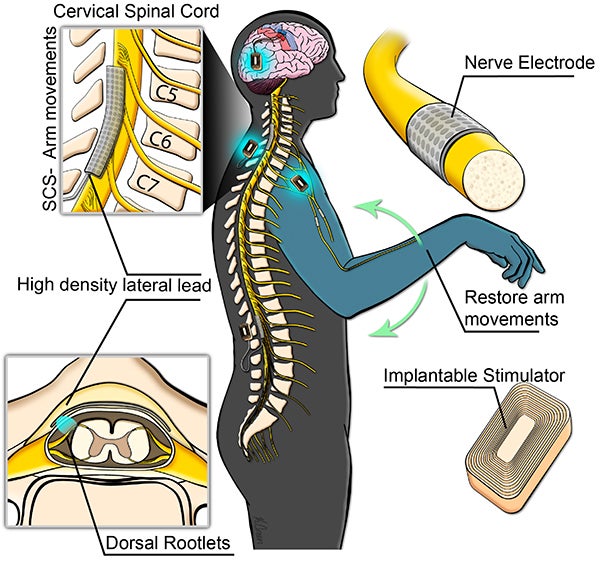

The neurophysiological mechanisms of action of spinal cord stimulation are not completely understood but may involve masking pain sensation with tingling by altering the pain processing of the central nervous system. Studies differ greatly in reporting the percentage of people who have lead migration but the majority of studies report in the range of 10-25% of lead migration for spinal cord stimulation. In circumstances involving major lead migration a reoperation may be required to reset the lead placement. With this complication, recapturing paraesthesia coverage can be attempted with reprogramming. The most common hardware related complication is lead migration, in which the implanted electrodes move from their original placement. Some people find the tingling sensation caused by older model SCS to be unpleasant.
#Spinal stimulator generator#
Other complications include rotation of the pulse generator, haematomas (subcutaneous or epidural), cerebrospinal fluid (CSF) leak, post dural puncture headache, discomfort at pulse generator site, seroma and transient paraplegia. The most common complications include lead migration, lead breakage, and infection. In a 7-year follow-up, the overall complication rate was 5-18%.

Adverse effects and complications Ĭomplications with SCS range from simple easily correctable problems to devastating paralysis, nerve injury and death. Other contraindications include local and systemic infection, pacemakers, or those people for whom pre-surgical imaging studies show have anatomy that makes placement difficult, or if concerns arise during psychological evaluation. SCS may be contraindicated in people who have coagulation related disorders, or are on anticoagulant therapy. If pain control and increased activity was achieved, a permanent system, with leads and a pulse generator, is placed. Once a person has had a psychological evaluation and deemed an appropriate candidate for SCS, a temporary implant is placed, called a trial, to determine the best stimulation pattern, and the person is sent home for three to ten days with an external pulse generator. Īs of 2014 the FDA had approved SCS as a treatment for FBSS, chronic pain, Complex Regional Pain Syndrome, intractable angina, as well as visceral abdominal and perineal pain and pain in the extremities from nerve damage. The most common use of SCS is failed back surgery syndrome (FBSS) in the United States and peripheral ischemic pain in Europe.


 0 kommentar(er)
0 kommentar(er)
